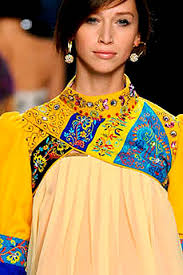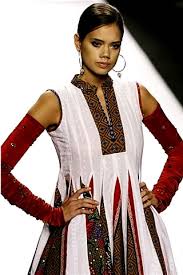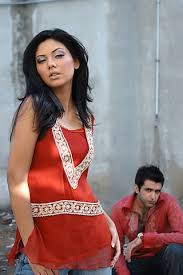Source (Google.com.pk)
Pakistani Dress Designers Biography











Pakistani Dress Designers Biography
Fashion is getting progress at very fast pace in Pakistan. Pakistan is saturated with full of talent in all fields and peoples in Pakistan are very devoted and hard worker to prove their efficiency. Today we are going to write about famous, popular, well reputed, brilliant and talented fashion designer Deepak Perwani.
Selection of words is very difficult to represent such a great personality in the fashion industry of Pakistan. The deconstruction of the sherwani made him the top men’s wear designer in the country. He was barely 3 months old in fashion when this accolade was given to him by a national newspaper. Deepak Perwani has not looked back since then, having been called the bad boy of Pakistani fashion many a times.
Shalwar qameez (also spelled shalwar kameez or salwar kameez) (Urdu: شلوارقمِيض), is a traditional dress worn by both women and men in South Asia and Central Asia. Shalwar or salwar are loose pajama-like trousers. The legs are wide at the top, and narrow at the ankle. The kameez is a long shirt or tunic. The side seams (known as the chaak), left open below the waist-line, give the wearer greater freedom of movement. It is notably known for being the national dress of Pakistan.
Shalwar are gathered at the waist and held up by a drawstring or an elastic band. The pants can be wide and baggy or more narrow, and even made of fabric cut on the bias.
The kameez is usually cut straight and flat; older kameez use traditional cuts, as shown in the illustration above. Modern kameez are more likely to have European-inspired set-in sleeves. The tailor's taste and skill are usually displayed, not in the overall cut, but in the shape of the neckline and the decoration of the kameez. Modern versions of the feminine kameez can be much less modest than traditional versions. The kameez may be cut with a deep neckline, sewn in diaphanous fabrics, or styled in cap-sleeve or sleeveless designs. The kameez side seams may be split up to the thigh or even the waistline, and it may be worn with the salwar slung low on the hips. When a woman wears a semi-transparent kameez (mostly as a party dress), she wears a choli or a cropped camisole underneath it.
When women wear the salwar kameez, they usually wear a long scarf or shawl called a dupatta around the head or neck. For Muslim women, the dupatta is a less stringent alternative to the chador or burqa (see also hijab and purdah). For Sikh and Hindu women (especially those from northern India, where the salwar kameez is most popular), the dupatta is useful when the head must be covered, as in a Gurdwara or a Temple, or the presence of elders. For other women, the dupatta is simply a stylish accessory that can be worn over one shoulder or draped around the chest and over both shoulders.
The Shalwar kameez is sometimes known as "Punjabi suit," in Britain and Canada. In Britain, especially during the last two decades, the garment has been transformed from an everyday garment worn by immigrant South Asian women from the Punjab region to one with mainstream, and even high-fashion, appeal.
In India, the garment was originally confined to the North, but as a convenient and modest alternative to a sari - and also as one that flatters practically any body-type - it has become popular across the nation. By varying the fabric, color and the level of embroidery and decoration, the salwar-kameez can be formal, casual, dressy, or plain; and it can also be made to suit practically all climates.
The most favorite dressing among Pakistani women is shalwar kameez which is worn in different styles, colors and designs especially the front part of kameez is decorated with different styles and designs of embroidery. It is worn with different sleeve length, shirt length, necklines and different types of shalwars like patiala salwar, churidar pajama and simple trouser. Kurta is also worn by women in latest designs. Dupatta is an essential part of shalwar kameez and considered a symbol of woman's respect.It is used with different embroidery designs of Kamdani and Gota.
Selection of words is very difficult to represent such a great personality in the fashion industry of Pakistan. The deconstruction of the sherwani made him the top men’s wear designer in the country. He was barely 3 months old in fashion when this accolade was given to him by a national newspaper. Deepak Perwani has not looked back since then, having been called the bad boy of Pakistani fashion many a times.
Shalwar qameez (also spelled shalwar kameez or salwar kameez) (Urdu: شلوارقمِيض), is a traditional dress worn by both women and men in South Asia and Central Asia. Shalwar or salwar are loose pajama-like trousers. The legs are wide at the top, and narrow at the ankle. The kameez is a long shirt or tunic. The side seams (known as the chaak), left open below the waist-line, give the wearer greater freedom of movement. It is notably known for being the national dress of Pakistan.
Shalwar are gathered at the waist and held up by a drawstring or an elastic band. The pants can be wide and baggy or more narrow, and even made of fabric cut on the bias.
The kameez is usually cut straight and flat; older kameez use traditional cuts, as shown in the illustration above. Modern kameez are more likely to have European-inspired set-in sleeves. The tailor's taste and skill are usually displayed, not in the overall cut, but in the shape of the neckline and the decoration of the kameez. Modern versions of the feminine kameez can be much less modest than traditional versions. The kameez may be cut with a deep neckline, sewn in diaphanous fabrics, or styled in cap-sleeve or sleeveless designs. The kameez side seams may be split up to the thigh or even the waistline, and it may be worn with the salwar slung low on the hips. When a woman wears a semi-transparent kameez (mostly as a party dress), she wears a choli or a cropped camisole underneath it.
When women wear the salwar kameez, they usually wear a long scarf or shawl called a dupatta around the head or neck. For Muslim women, the dupatta is a less stringent alternative to the chador or burqa (see also hijab and purdah). For Sikh and Hindu women (especially those from northern India, where the salwar kameez is most popular), the dupatta is useful when the head must be covered, as in a Gurdwara or a Temple, or the presence of elders. For other women, the dupatta is simply a stylish accessory that can be worn over one shoulder or draped around the chest and over both shoulders.
The Shalwar kameez is sometimes known as "Punjabi suit," in Britain and Canada. In Britain, especially during the last two decades, the garment has been transformed from an everyday garment worn by immigrant South Asian women from the Punjab region to one with mainstream, and even high-fashion, appeal.
In India, the garment was originally confined to the North, but as a convenient and modest alternative to a sari - and also as one that flatters practically any body-type - it has become popular across the nation. By varying the fabric, color and the level of embroidery and decoration, the salwar-kameez can be formal, casual, dressy, or plain; and it can also be made to suit practically all climates.
The most favorite dressing among Pakistani women is shalwar kameez which is worn in different styles, colors and designs especially the front part of kameez is decorated with different styles and designs of embroidery. It is worn with different sleeve length, shirt length, necklines and different types of shalwars like patiala salwar, churidar pajama and simple trouser. Kurta is also worn by women in latest designs. Dupatta is an essential part of shalwar kameez and considered a symbol of woman's respect.It is used with different embroidery designs of Kamdani and Gota.
Pakistani Dress Designers

Pakistani Dress Designers

Pakistani Dress Designers

Pakistani Dress Designers

Pakistani Dress Designers
Pakistani Dress Designers

Pakistani Dress Designers

Pakistani Dress Designers
Pakistani Dress Designers
Pakistani Dress Designers
Pakistani Dress Designers
Pakistani Dress Designers
Pakistani Dress Designers
i love reading this article so beautiful!!great job!
ReplyDeletePakistani Bridal Dresses
I love this blog!! The flash up the top is awesome!! Pakistani Party Dresses
ReplyDelete